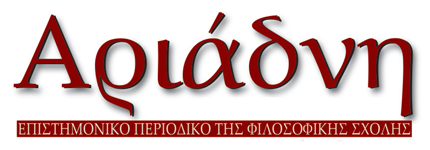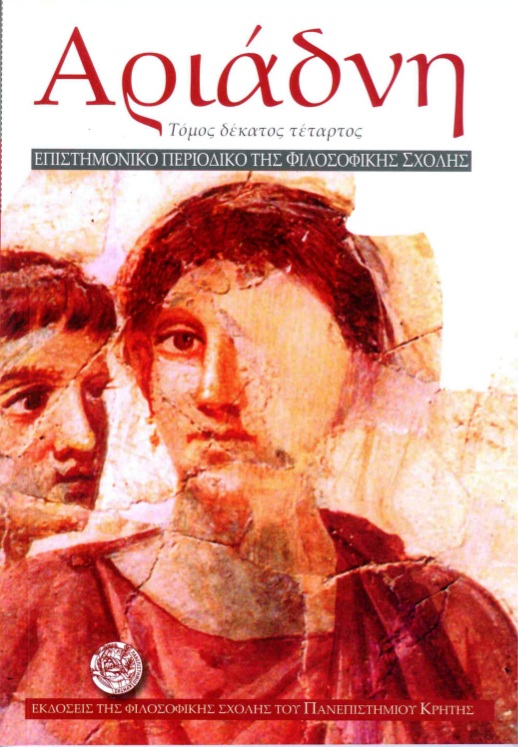Σαργοί και αίγες : ένας ξεῖνος ἔρως στο πλαίσιο μιας τελετουργίας και μιας βιοτικής ανάγκης
DOI:
https://doi.org/10.26248/ariadne.v14i0.412Περίληψη
ACCORDING TO Oppian of Cilicia (Halieutica 4.308-373), in hot weather when goat-herds drive their flocks to the sea, the fish sargus (Diplodus sargus, common name white seabream), devoting itself to acts of love, meets the goats and enjoys a unique experience. The scene prompts a fisherman to put himself inside a goat skin and to throw a bait of barley-meal enriched with goat flesh in order to deceive the innocent fish. The whole event includes several terms or phrases referring to Dionysiac worship (the groups of animals as vehicles of action, the goat-herds’ voices, the baths, the ideal time and place for this most peculiar matching of a sea creature with one from the land), which may persuade the readers of Dionysus’ presence, even if he is not named. What is indeed interesting is that the custom quoted by Oppian –in the first part of the scene– used to take place until fairly recently in several mountainous villages of Eastern Crete, providing a pleasant opportunity for the herdsmen to come down to the sea for this feast.
Λήψεις
Δημοσίευση
Πώς να δημιουργήσετε Αναφορές
Τεύχος
Ενότητα
Άδεια
Οι εργασίες που δημοσιεύονται στο περιοδικό μπορούν να χρησιμοποιηθούν ελεύθερα για μη-εμπορικούς σκοπούς με την προϋπόθεση ότι γίνεται αναφορά στους συγγραφείς και την πρώτη δημοσίευση. Στην περίπτωση που το άρθρο αλλοιωθεί, τροποποιηθεί ή δημιουργηθεί κάτι νέο βασισμένο στο αρχικό, το έργο που θα προκύψει θα μπορεί να διανεμηθεί μόνο με την ίδια ή παρόμοια άδεια (Creative Commons Attribution-NonCommercial-ShareAlike 4.0 International License).


